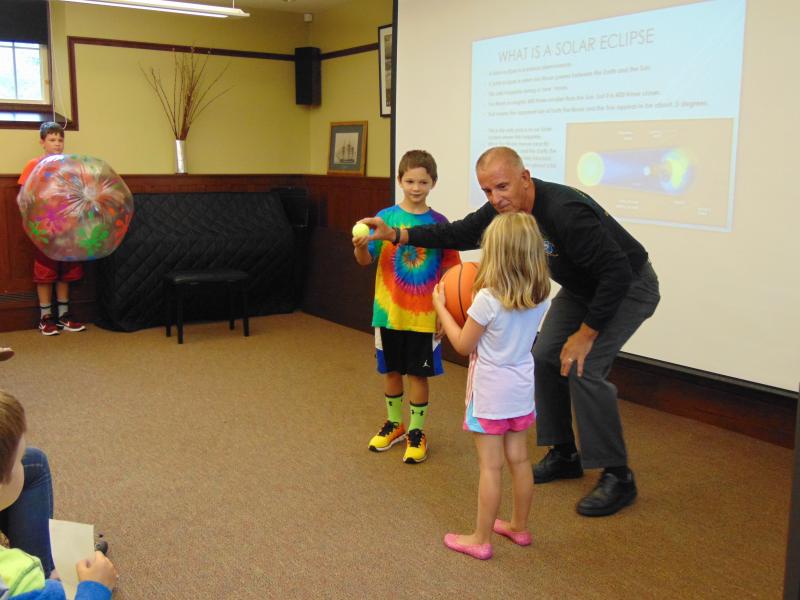A total eclipse of the heart...er, sun
On August 21, tri-town residents will want to call in sick, take a vacation day, or have a late lunch outside.
A solar eclipse will be in visible on that Monday afternoon, barring any clouds blocking the sun, and Roger Menard stopped by Mattapoisett Library on July 25 to talk about what to expect.
Menard, a member of the Astronomical Society of Southern New England, explained that during a solar eclipse, “it’s dark in the middle of the day for a short period of time.”
A solar eclipse is when a full or new moon, the Earth and the sun all perfectly align in space. Despite the sun being about 400 times bigger than the moon, the moon is about 400 times closer to Earth, so from our perspective the moon completely blocks out the sun.
Solar eclipses happen in five parts, the first phase is when the moon just begins to cross in front of the sun, the second is when the majority of the sun is covered by the moon, the third is called totality and is when the moon completely blocks the sun, and the fourth and fifth phases are the same as the first two but reversed as the moon finishes crossing the sun.
The eclipse lasts, in total, about an hour or two. However, totality lasts only a few minutes. It is estimated that on August 21 it will last for two minutes and 43 seconds.
Only about a 125 mile wide area sees totality during an eclipse. During the upcoming eclipse, totality will stretch from Oregon, through the center of the country in a diagonal line to about Charleston, South Carolina. The tri-town will be in an area called the penumbra, and residents will see about 70 percent of the sun covered by the moon.
Solar eclipses happen about every 18 months, but the reason they’re so special, Menard said, is that because the actual eclipse happens on such a small part of the world, it only happens in any given place once every 360-410 years. Additionally, 70 percent of the globe is uninhabited ocean, meaning oftentimes the eclipse happens where nobody sees it.
Nowadays, solar eclipses are cause for excitement. Menard said that hotels in the areas where totality will be visible are completely sold out as people make plans to travel and witness the event. However, in ancient times many cultures thought solar eclipses were bad omens, especially for kings and rulers.
Even though Babylonia and ancient China had figured out how to predict solar eclipses as early as 2500 BC, this did not quell their fears.
“Many feared it as a supernatural event,” Menard said. “Many cultures thought there was a giant creature in the sky that gobbled up the sun.”
The last solar eclipse in the United States was in 1991, and the next one is predicted for 2024. For exact timing to view the one in August, Menard suggests the Solar Eclipse App, which has a timer for your exact location to tell you when to get outside.
However, once outside, Menard warns against staring up at the eclipse.
“Staring at solar eclipses will damage your eyes,” he said. “Go online and order solar eclipse viewing glasses. Regular sunglasses won’t protect you.”














